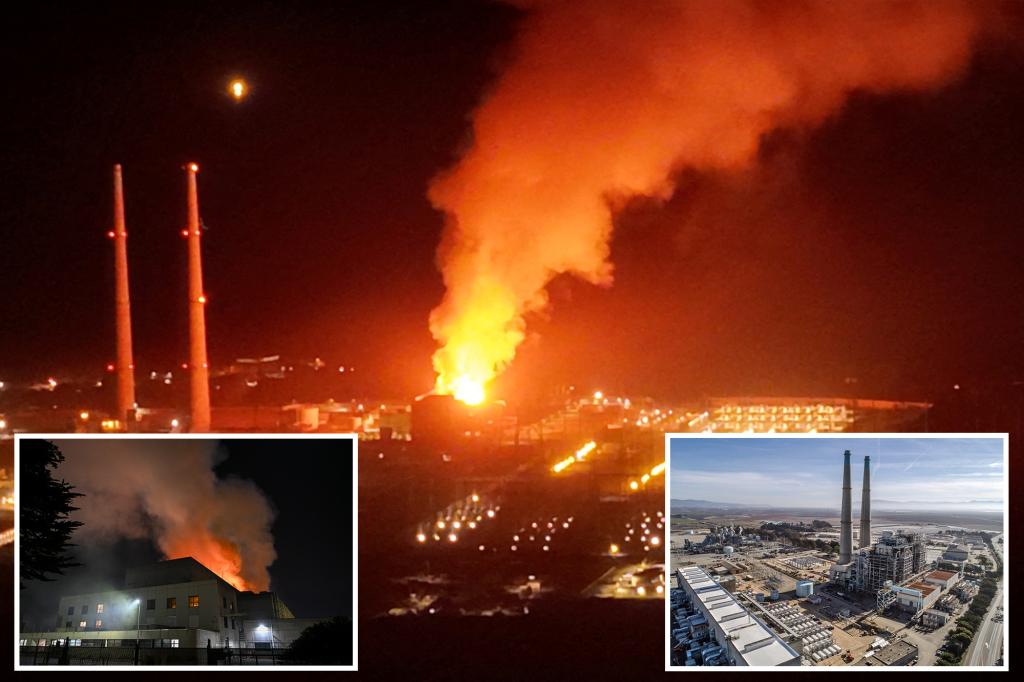The Moss Landing energy storage facility, one of the world’s largest, became engulfed in flames on a Thursday afternoon, triggering a significant emergency response and the evacuation of approximately 1,500 residents. Located in Monterey County, California, the facility, owned by Vistra Energy, houses tens of thousands of lithium-ion batteries, known for their energy density but also their flammability. While the fire was contained within a partially collapsed concrete structure, the potential for the blaze to spread and the release of toxic fumes necessitated the evacuation order. Local authorities stressed the seriousness of the situation, urging residents to comply with evacuation instructions and emphasizing the prioritization of life and property safety.
The fire erupted at the Vistra Corp’s Moss Landing plant, situated along Monterey Bay, and quickly escalated into a major incident. The facility’s substantial battery storage capacity, estimated at 750 megawatts, underscored the scale of the potential hazard. As the fire raged, thick plumes of smoke billowed into the air, posing a health risk to surrounding communities. Officials advised residents in nearby areas to remain indoors and keep their windows closed to minimize exposure to potentially harmful fumes. Several local schools announced closures for the following day due to the ongoing emergency.
The rapid response from county and neighboring jurisdictions saw all available resources deployed to contain the fire and manage the evacuation. While the fire was primarily contained within the concrete structure housing the batteries, the incident highlighted the potential risks associated with large-scale battery storage facilities. Lithium-ion batteries, while crucial for renewable energy storage, are known to be susceptible to thermal runaway, a chain reaction that can lead to intense fires and the release of toxic gases. These gases can cause respiratory issues and skin burns, adding another layer of complexity to the emergency response.
The Moss Landing facility plays a critical role in California’s transition to renewable energy sources. It stores electricity generated from renewable sources like solar and wind power, which is then sold to Pacific Gas and Electric (PG&E). This stored energy helps stabilize the grid and ensures a consistent power supply, especially during peak demand periods or when renewable energy generation is low. The fire, however, raised concerns about the safety and reliability of such large-scale battery storage systems, which are becoming increasingly important for integrating renewable energy into the power grid.
While the immediate focus was on containing the fire and ensuring public safety, the incident also sparked discussions about the long-term implications for California’s energy strategy. The state’s ambitious renewable energy goals rely heavily on energy storage solutions like the Moss Landing facility. The fire, therefore, underscored the need for rigorous safety protocols and ongoing research to mitigate the risks associated with these technologies. The incident also emphasized the importance of emergency preparedness and community education to ensure a swift and effective response to similar incidents in the future.
The investigation into the cause of the fire was set to commence once the blaze was fully extinguished. Vistra Energy confirmed the safe evacuation of all its personnel and pledged full cooperation with the investigation. The incident, while undoubtedly a setback, served as a crucial learning opportunity for the industry and regulators alike. It highlighted the need for continuous improvement in safety standards, battery technology, and emergency response protocols to ensure the safe and sustainable integration of renewable energy sources into the power grid. The incident at Moss Landing served as a stark reminder of the challenges and complexities involved in transitioning to a cleaner energy future.










